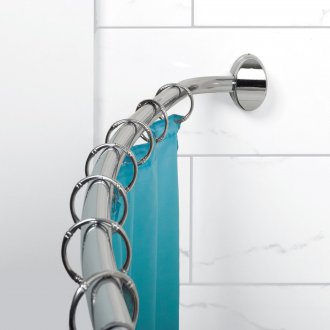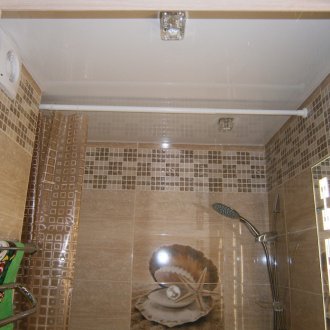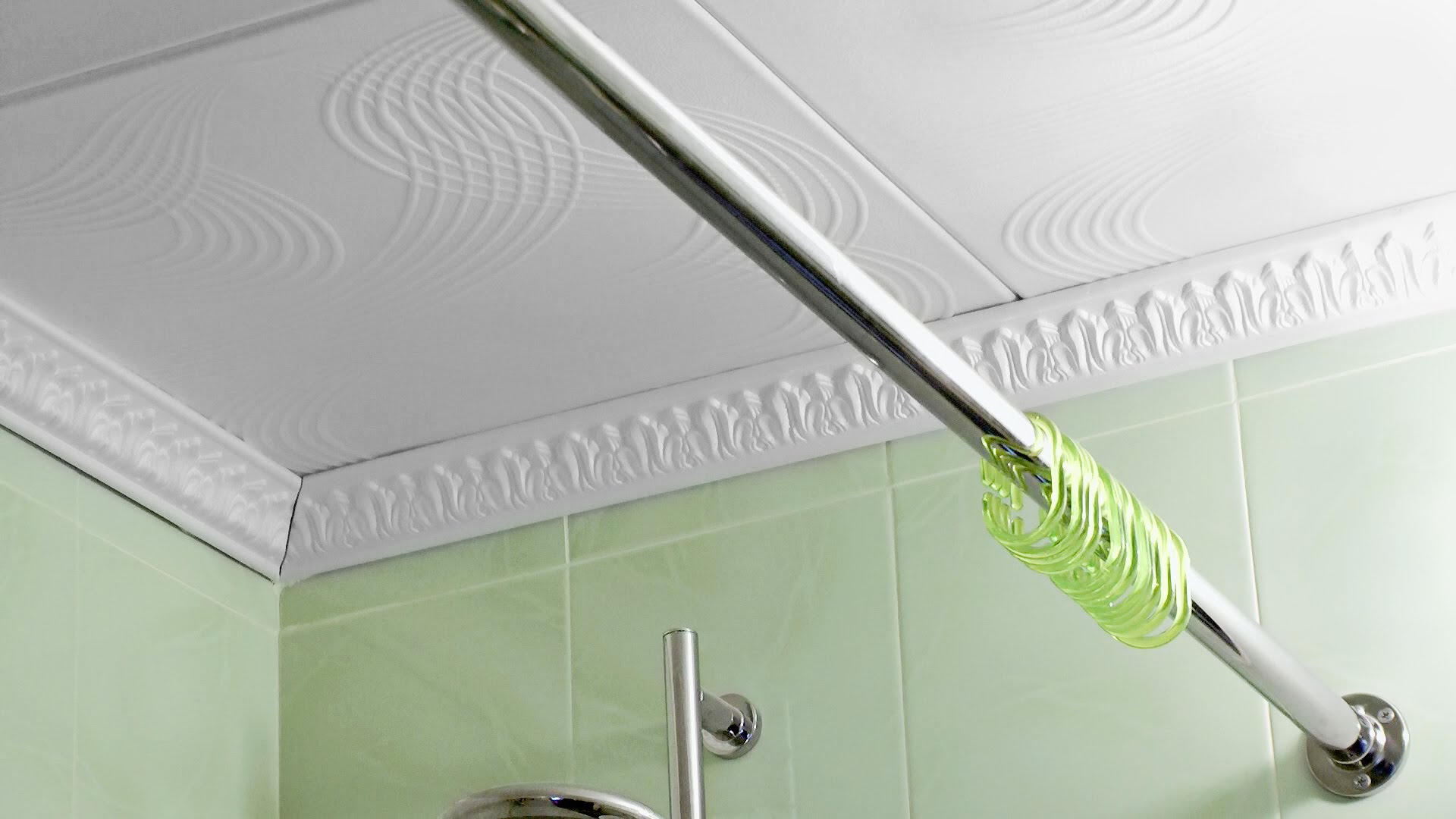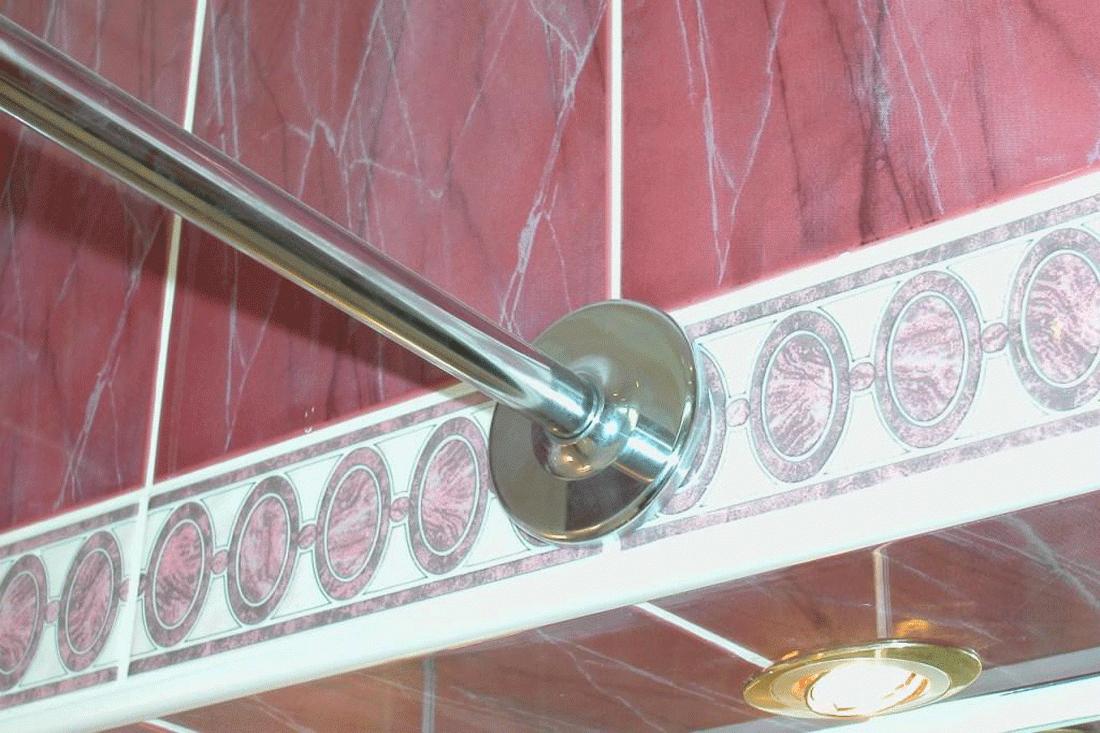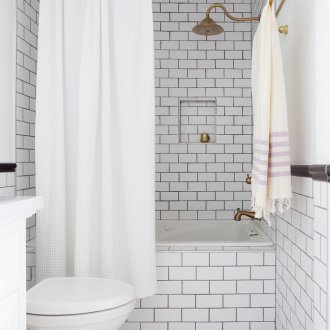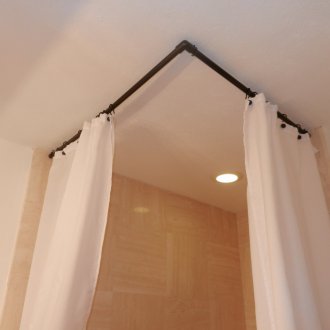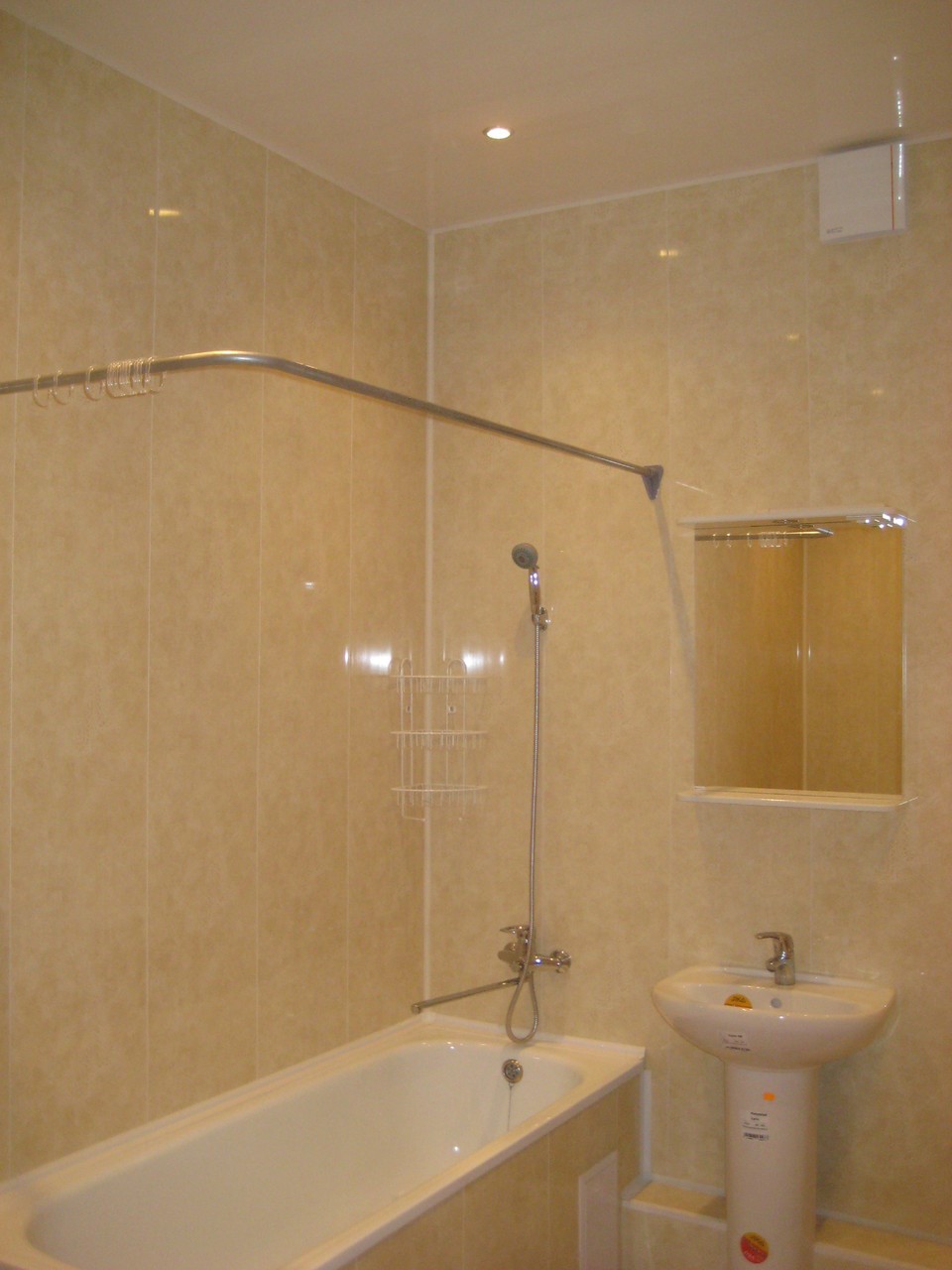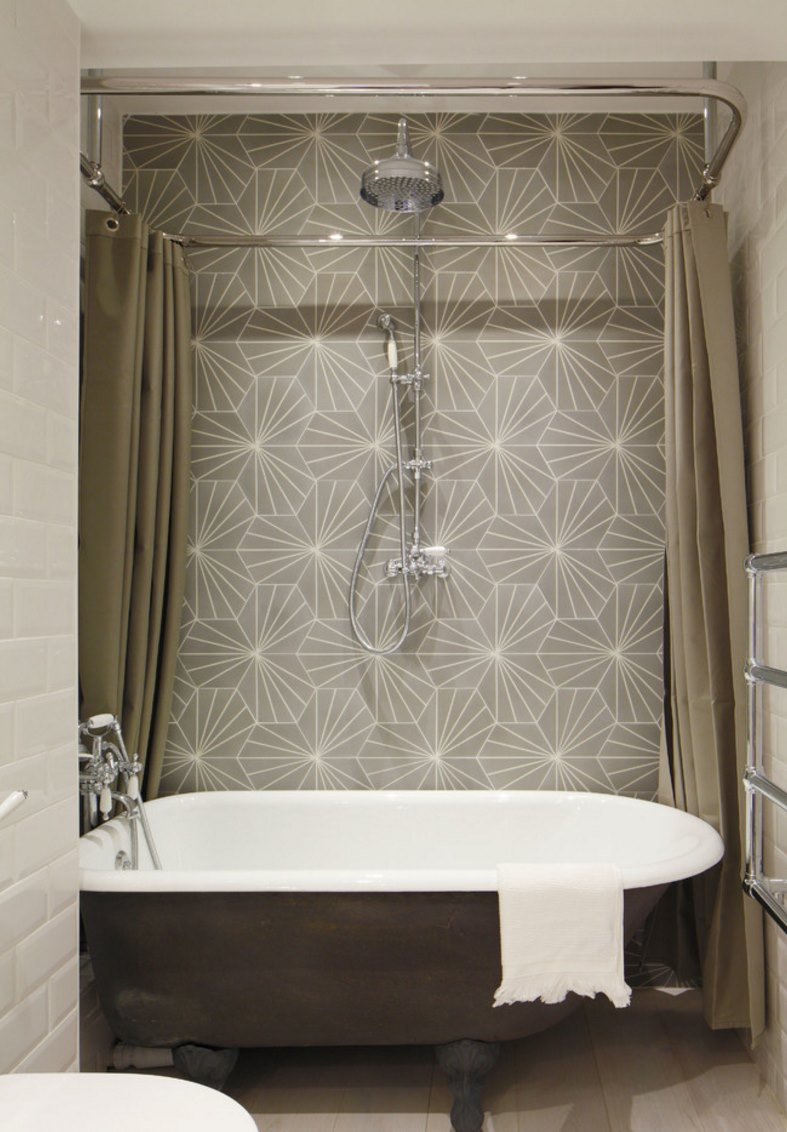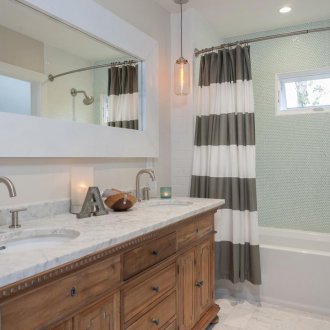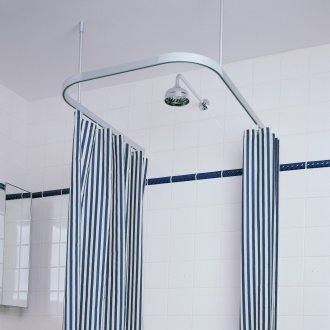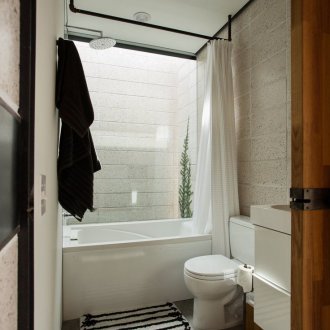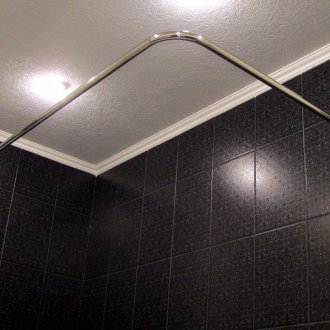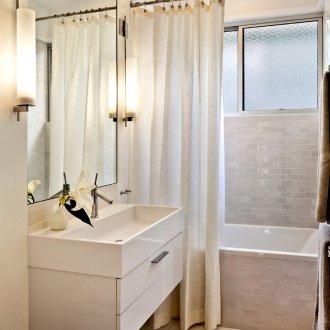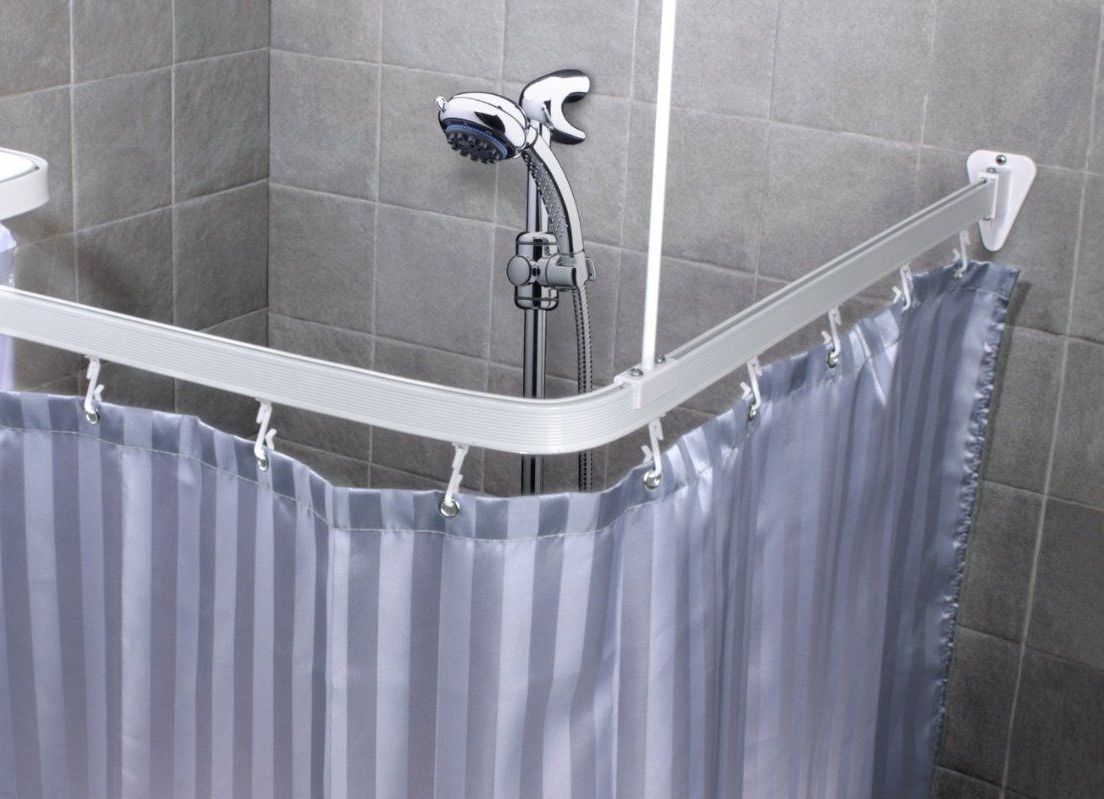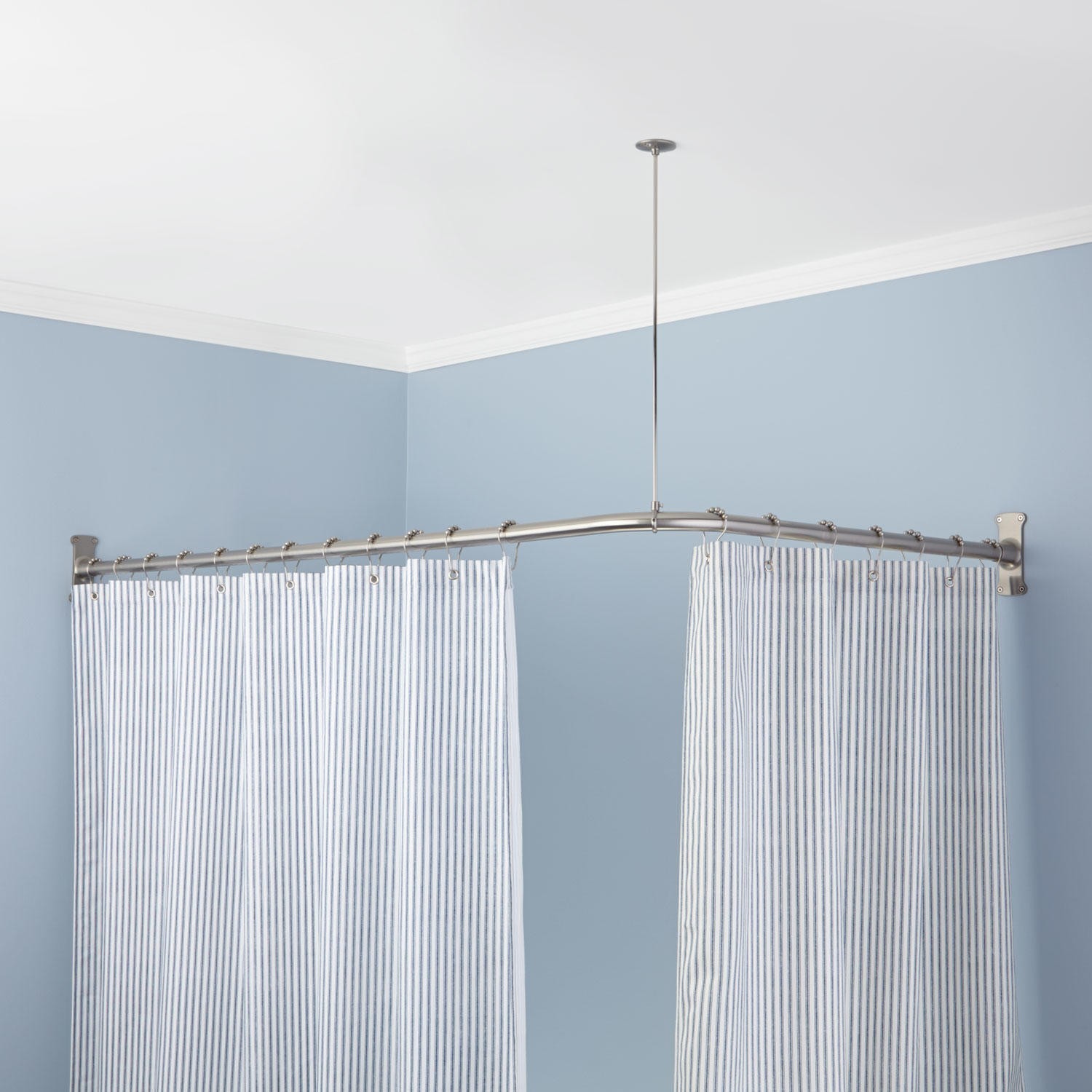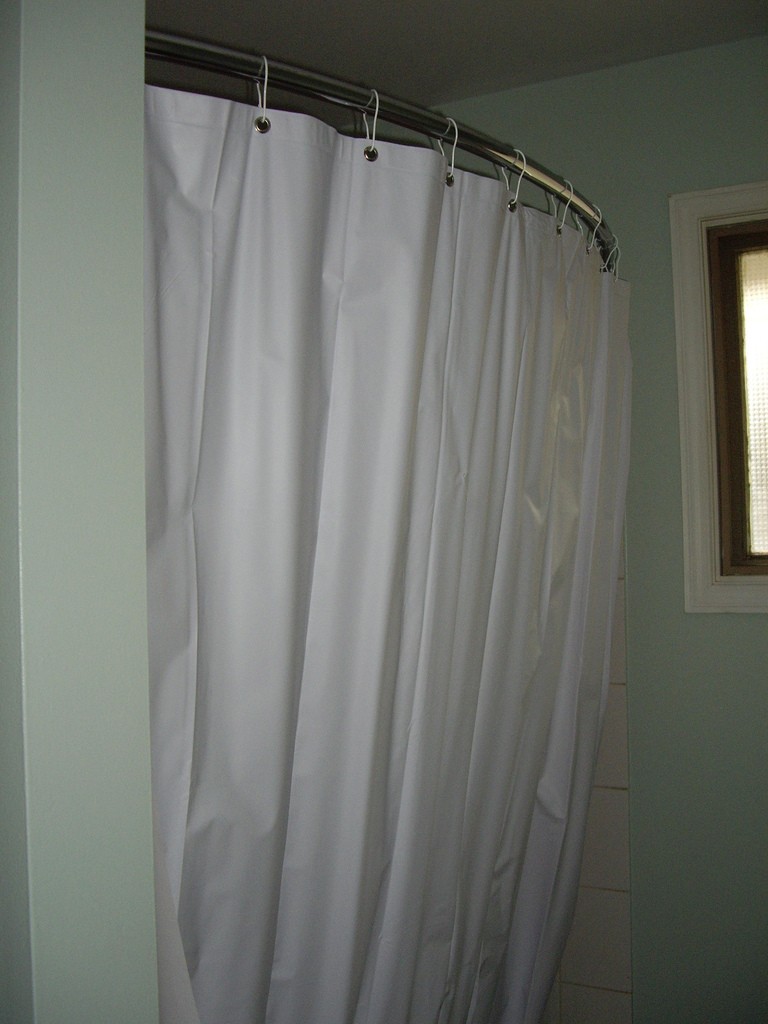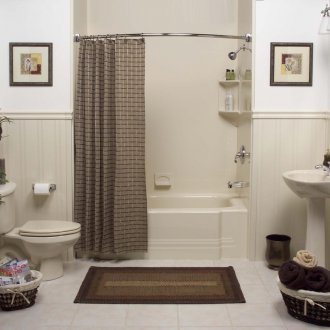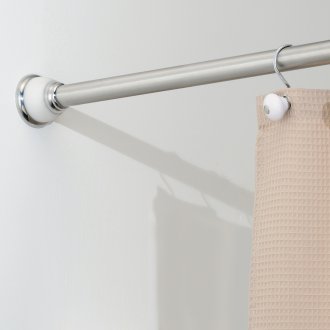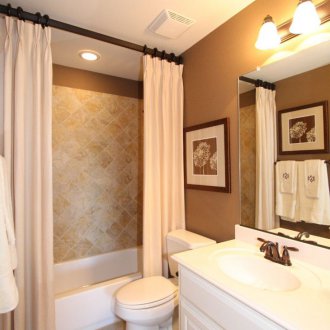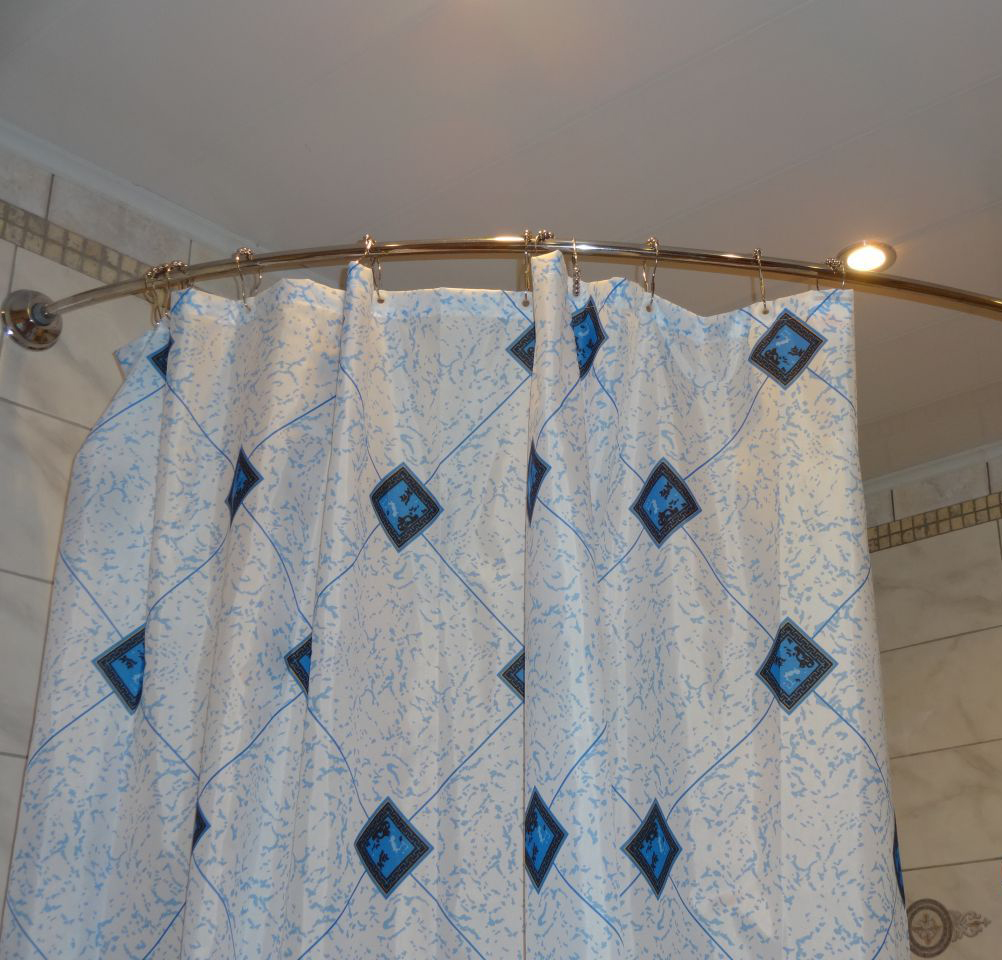Bath rod - reliable protection and decorative element of the interior (22 photos)
Content
The bathroom has a high level of humidity, and the installation of a rod with a curtain will protect the floor, walls and mirrors from splashing. A variety of bath configurations require repeating the same lines from the eaves, therefore, in the building materials market, various models of protective structures are offered.
Bar mounting methods
According to the type of installation, the cornices are divided into two types: ceiling and wall. Ceiling models are infrequent, since mounting the bar on popular suspended structures is not easy. It will also be difficult to install the product on a stretch ceiling. Suitable ceilings are concrete, plastic and slatted, but in general it is doubtful whether it is necessary to install a cornice so high, since to protect the room from water splashes, it is enough to fix the bar at a level slightly above average human height.
Wall-mounted rods are the most common. Advantages: a wide variety of materials and shades, simple installation, low price, the ability to choose a model for a bathtub of a non-standard configuration.
Types of Wall Mount Rods
According to the form and installation method, you can subdivide products into several groups.
- Straight bar fixed with stop flanges. This is the most common and cheapest option to equip a curtain for the bathroom. The bar can be made independently: a piece of chrome pipe is enough (the length is equal to the distance between the walls where the bathtub stands). For this purpose, a kitchen bolt, which can be bought in a furniture store, is quite suitable. A pair of flanges is mounted on the walls and serves as a support for the rod. A significant drawback - the chrome coating from frequent movement of the curtain rings quickly clings, but this problem is solved by simply replacing the pipe. A straight-line bar perfectly closes the classic bath mounted on the wall.
- Corner rod is used to equip corner bathtubs. This type of product includes a semicircular, U-shaped and L-shaped rod for the bathroom. The difficulty lies in the selection of a pipe that repeats the line of the edge of the tank. For baths with asymmetry, it is necessary to specially order rods, of a non-standard design (a curved rod must necessarily copy the external free contour of the tank). The devices can only be mounted on walls and it is recommended that they be fixed to the ceiling (in one or two places). Fixing the cornice to different planes is carried out to ensure rigidity and reliability of the structure. This method is used to design oval / round bathtubs installed in the center of the room.
- A flexible bar can be considered universal, as it is suitable for arranging any bathtub. For the manufacture of the tube, a special aluminum profile is used, which easily takes a different shape, even asymmetric. Moreover, any special tools for forming bends are not required.
- The telescopic rod for the bathroom is designed according to the “pipe in pipe” principle and can be from 1.3 m to 2 m long. A spacer method is used to install the product - the rod of the required length is rigidly fixed between the walls using a threaded flange.
- The telescopic boom-expander has a structure in which the tubes are connected by a strong spring. During installation, the rod is stretched to a length slightly larger than the distance between the walls (approximately 1-1.5 cm). Before mounting the rod, the spring is compressed, and after installing the pipe in the right place, it is released. The design is firmly fixed at the required level. Such a model can be called the most common due to ease of installation, a variety of shades and sizes. A significant plus of the design is that you do not need to drill walls.
Rod Materials
Due to the special operating conditions (high humidity, frequent sliding of the curtain rings), not every material is suitable for the manufacture of brackets for the shower.
Plastic products are characterized by moisture resistance, low weight, ease of installation, various sizes (rods with parameters of 75-120 / 125-220 / 140-250 cm are available) and colors, affordable price. The curtain rings quietly slide along such a bar. Disadvantages: short service life, the likelihood of deformation after some time (especially if the curtain is heavy). White rods eventually turn yellow. A better material is metal plastic, which has the necessary rigidity so as not to sag. Minus: the price is much higher than plastic counterparts.
Stainless steel serves a very long time. Metal rods may have a polished or matte finish. Advantages - corrosion resistance, ease of movement of the curtain. The rigidity eliminates the possibility of sagging curtains. A sore spot of such a bar can be considered high cost. Also, when moving metal rings, an unpleasant noise is heard that not everyone likes.
Aluminum rods are lightweight, durable, resistant to high humidity. The minus of the material is the ability to bend from serious loads.
Bronze rods cannot be called common. As a rule, such models look harmoniously in the interiors of the bathrooms of the Baroque and Art Nouveau styles. Such exquisite elements should be complemented by appropriate curtains / curtains.
How to install the rod using flanges?
For such installation, a metal bar is used for curtains to the bathroom. The advantages of fastening are reliability, the ability to withstand significant loads. Disadvantages: preparatory work is required, drilling the walls.
For work, you will need a rod, flanges, reflectors, self-tapping screws, dowels, pencil, tape measure, screwdriver, drill / perforator, building level.
- On the walls with a pencil marks the places where the flanges will be installed. Moreover, the distance from the bar to the edge of the bath is equal to the length of the curtain, reduced by 15-25 cm. The height margin is required so that the curtain falls into the bath and water splashes do not fall on the floor.
- Flanges are applied to the marks and drilling points are marked.
- Dowels are inserted into the drilled holes. The flange is fixed on the wall by means of self-tapping screws and a bar for the curtain is placed in the bathroom with the reflectors on.
- The second flange is mounted on the wall together with the rod. The whole structure is fixed with a clamping screw.
- Reflectors extend to the ends of the bar and press against the walls.
Before carrying out installation work, it should be clarified what material the walls are made of. When attaching the rod to the supporting walls, a punch is used. If the surface is decorated with granite, it is advisable to use a diamond drill.
Mounting the boom with telescopic mechanism
The model includes two tubes of various diameters and an ejection spring. The ends are equipped with anti-slip seals. Design advantages: no special preparatory work is carried out, the length of the bar is easily adjusted and just pick up the shade of the bar taking into account the color scheme of the room. A serious drawback - with a heavy load or a strong jerk, the bar may fall.
The construction level and the pencil will help to accurately establish the design.
- On the wall marked the installation location of the rod. In this case, one must remember the margin of the length of the curtain, which should be lowered into the bath.
- The bar extends to a length that makes up the distance between the walls, plus 0.5-1 cm.
- If the set includes integral rings, then they are put on the pipe before hanging the curtain.
- The bar is fixed at the right level, and the horizontal position is regulated by the building level.
This installation option is optimal for bathrooms in which the walls are tiled, porcelain or painted.
The shower bar in the bathroom and the curtain are not only protective, but also a design element, therefore, to create an exquisite interior, the design style of the room must be taken into account. In case of possible difficulties with installation, it is advisable to contact professionals who will take into account the nuances of the room and the wishes of the owners.
